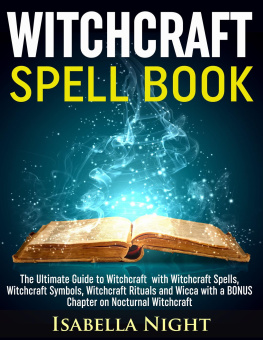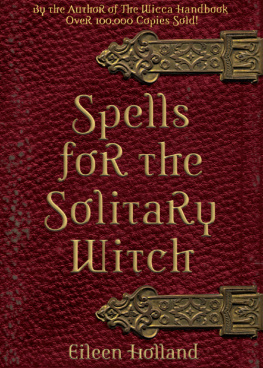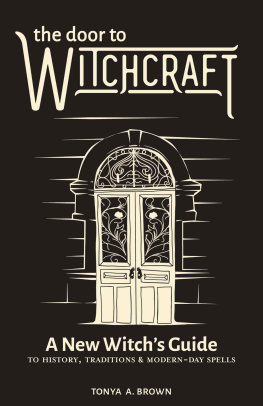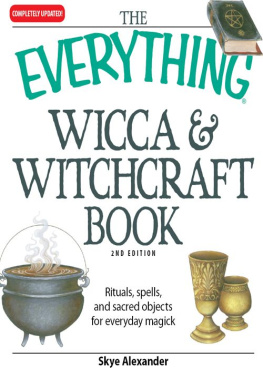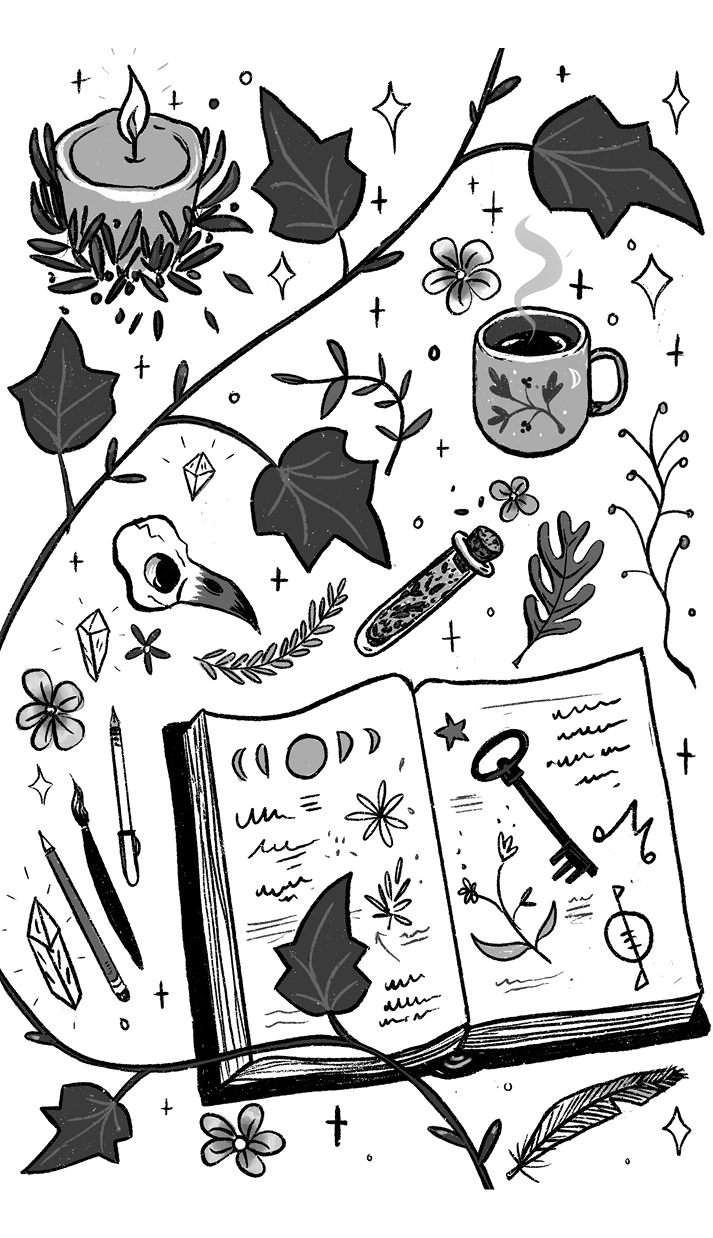INTRODUCTION
W ithin the modern witchs world, there is virtually no aspect or topic unavailable to the inquisitive reader. From Wicca to green witchcraft and information on folk and herbal magick, the amount of literature and resources available to new witches is endless. However, most of the beginner books that I could get my hands on when I first started my craft around six or seven years ago were based around the Wiccan religion, or particularly whitewashed, covering up the history and culture of voices of color. I found that there were specific books on certain paths, like green witchcraft or hedge witchcraft, but no book that gave a starting point without the influence of another source or religion. I felt like the information available to those who wanted to pursue their own path was limited, and there was a basic foundation for learning about witchcraft that wasnt being shared.
This was around 2015 or 2016. Since that point, more books have emerged that approach witchcraft as a practice formulated to the individual which are less ritualistic and ceremonial. Although ritual, ceremony, and traditional witchcraft have their places in the modern witchs world, more and more witches are finding their way to the Craft and looking for noncommittal places to start. Some argue that the path of the witch is sacred, and should be kept under close lock and key, and only those who can commit to years of training and initiation deserve the title. I take a different approach in this book.
Spells for Change: A Guide for Modern Witches covers what I, a practicing eclectic/folk witch, consider the basic foundations of spellcraft and formulating your practice. Eclecticism describes a practice that picks and chooses from many open traditions of witchcraft to create a customized version, while folk witchcraft describes, very simply, a magick of the people emphasized by use of the items of the land and the materials around them. This is the book I wish Id had at sixteen, when I started researching my craftit is devoid of a particular path or religion and fully adaptable to what works best for you and your craft. All of the spells are lifted from my own practice, and each section is devoted to looking at these foundations of manifesting change through spell work, intent, and mindfulness with a decolonized point of view ( ). These are methods that are tried and true to me, and have been backed by my experience in my practice, by other books, and by my mentors and friends who are witches. This book strives to take into consideration accessibility and different learning abilities, and to bring awareness to the origin of the Craftits history of appropriation and colonization, and how we, as witches, can use witchcraft as a form of activism as well as a vessel for change.
We, as modern witches, are not only living through a rebirth of the Craft but a rapidly changing world. When a many-thousand-year-old practice focused on rebalancing the power of the universe, connecting with yourself, and connecting with the divine is brought into the modern day, how does it change? How does it morph and adapt to fit the tech-savvy, capitalist world of today? How do materialism, classism, racism, and power dynamics affect our practice? How do we carve time not just for ourselves to reconnect with the universe but time for empathy and the will to create a better world?
This book is created to add nuance to a practicing witchs craft and create a starting place for those looking to begin, but also to allow those who have never heard of the Craft to explore it in theory. What is it? How do we use it? It discusses the tools that are used, the history of witchcraft, the love and prioritization of self, and so much more. As more individuals find witchcraft, more questions will arise, but my goal is to assess and answer all the questions that I have so far received while building an online social media platform and being a mentor as a modern-day practicing witch.
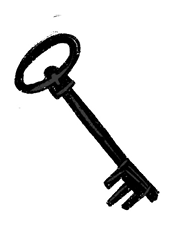
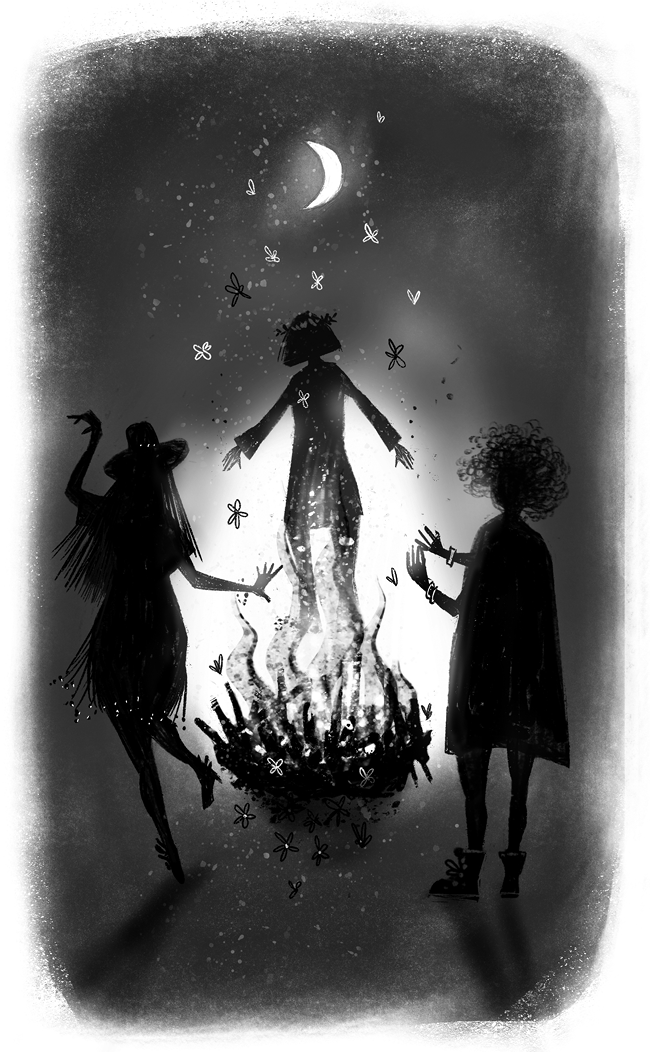
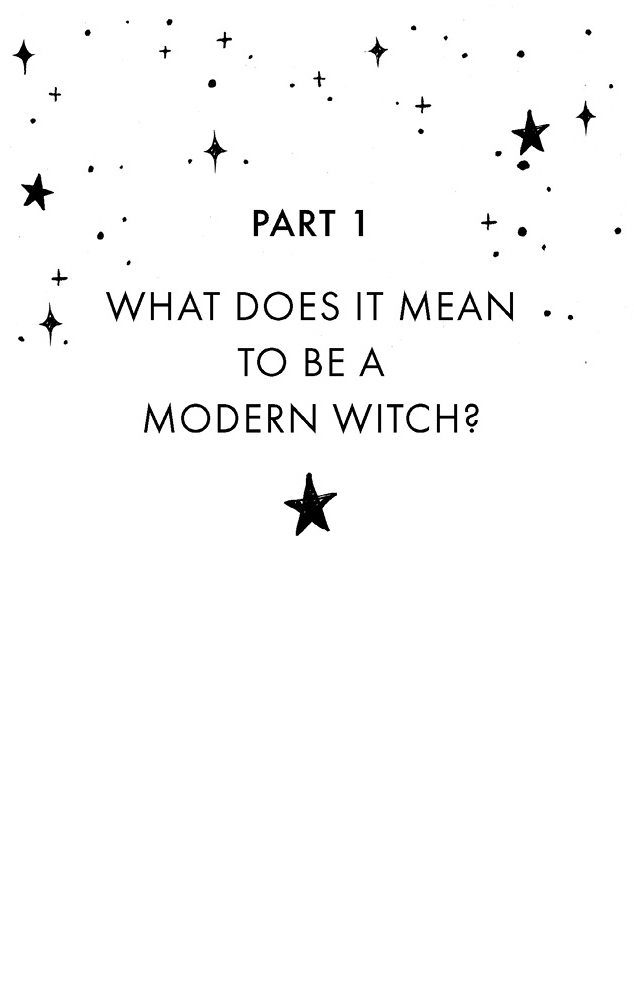
WHO ARE THE
MODERN DAY WITCHES?
F ar away from the long, hooked noses of Hocus Pocus and the power-hungry Nancy in The Craft lives a very different type of witchcraft. Often, media interpretations of witchcraft, and what a witch is, have helped to demonize the term. Where Harry Potter and Chilling Adventures of Sabrina paint scenes of levitation, contracts with the devil, and wand waving, real witchcraft is very different. Many trace the origins of witchcraft and their first discussions on it to the Salem witch trials of the seventeenth century; however, its roots are actually much older. Witchcraft is based in many ancient pagan traditions where shamans, priests/priestesses, Druids, and oracles were seen as holy. It can be found in the Celtic lands in closed Irish practices ( ), handed down from generation to generation; among the Romani peoples; in different parts of Italy; and so much more. Some may define witchcraft in more traditional, ritualistic terms but others may find that witchcraft is as simple as giving intent and meaning to a daily activity, honoring a deity through action, or being aware of the energy of the universe and how it influences what we bring forth into our lives. The idea of manipulating energy, calling on a spirit, using herbs, candles, and good-luck charms to sway life one way or another is ancient, and has infiltrated the modern day in more ways than one. Knocking on wood and other superstitions descended from folk magic, much like blowing out birthday candles comes from the idea that our movement and breath hold life, energy, and power.



